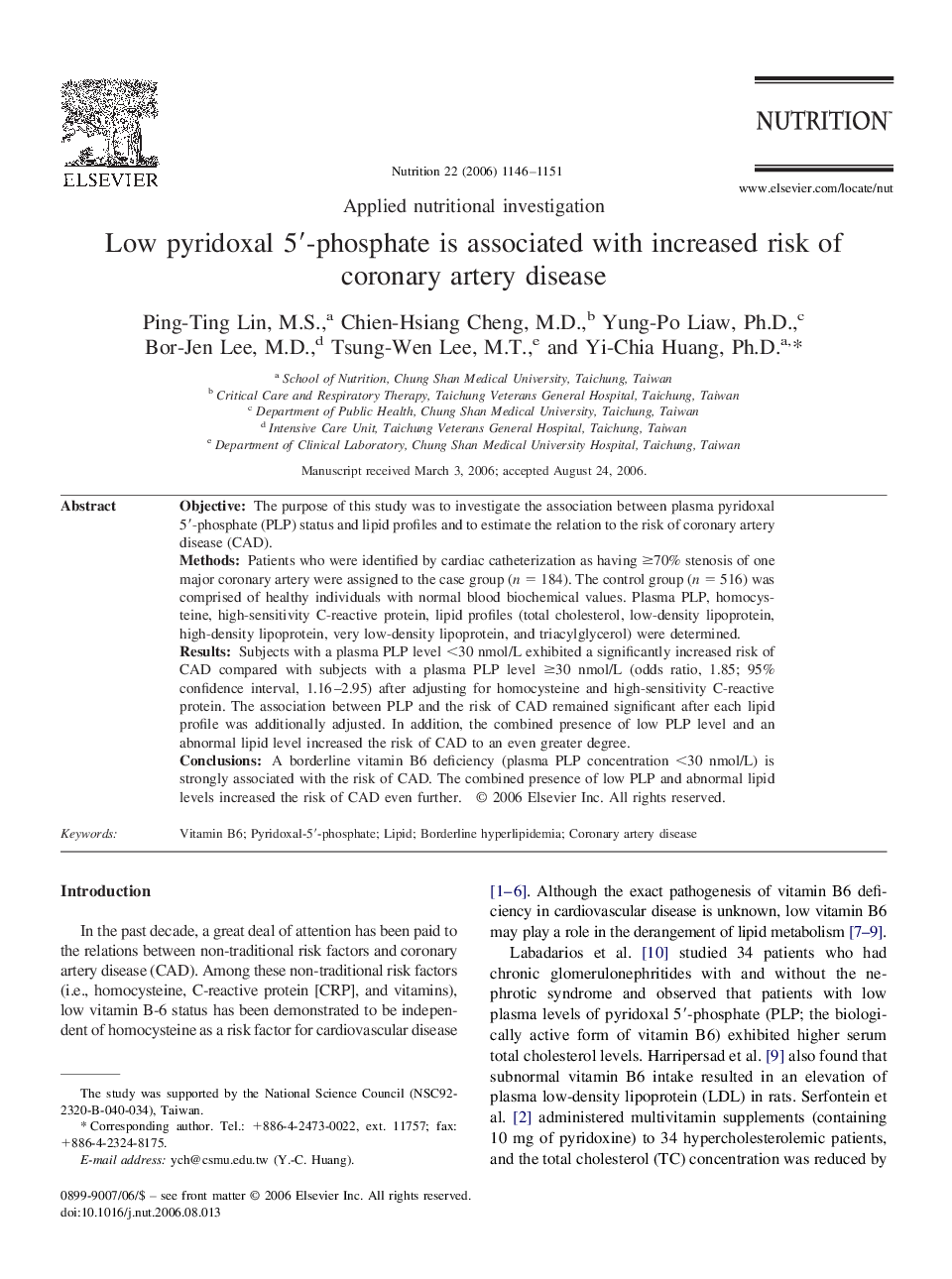| Article ID | Journal | Published Year | Pages | File Type |
|---|---|---|---|---|
| 3277685 | Nutrition | 2006 | 6 Pages |
ObjectiveThe purpose of this study was to investigate the association between plasma pyridoxal 5′-phosphate (PLP) status and lipid profiles and to estimate the relation to the risk of coronary artery disease (CAD).MethodsPatients who were identified by cardiac catheterization as having ≥70% stenosis of one major coronary artery were assigned to the case group (n = 184). The control group (n = 516) was comprised of healthy individuals with normal blood biochemical values. Plasma PLP, homocysteine, high-sensitivity C-reactive protein, lipid profiles (total cholesterol, low-density lipoprotein, high-density lipoprotein, very low-density lipoprotein, and triacylglycerol) were determined.ResultsSubjects with a plasma PLP level <30 nmol/L exhibited a significantly increased risk of CAD compared with subjects with a plasma PLP level ≥30 nmol/L (odds ratio, 1.85; 95% confidence interval, 1.16–2.95) after adjusting for homocysteine and high-sensitivity C-reactive protein. The association between PLP and the risk of CAD remained significant after each lipid profile was additionally adjusted. In addition, the combined presence of low PLP level and an abnormal lipid level increased the risk of CAD to an even greater degree.ConclusionsA borderline vitamin B6 deficiency (plasma PLP concentration <30 nmol/L) is strongly associated with the risk of CAD. The combined presence of low PLP and abnormal lipid levels increased the risk of CAD even further.
